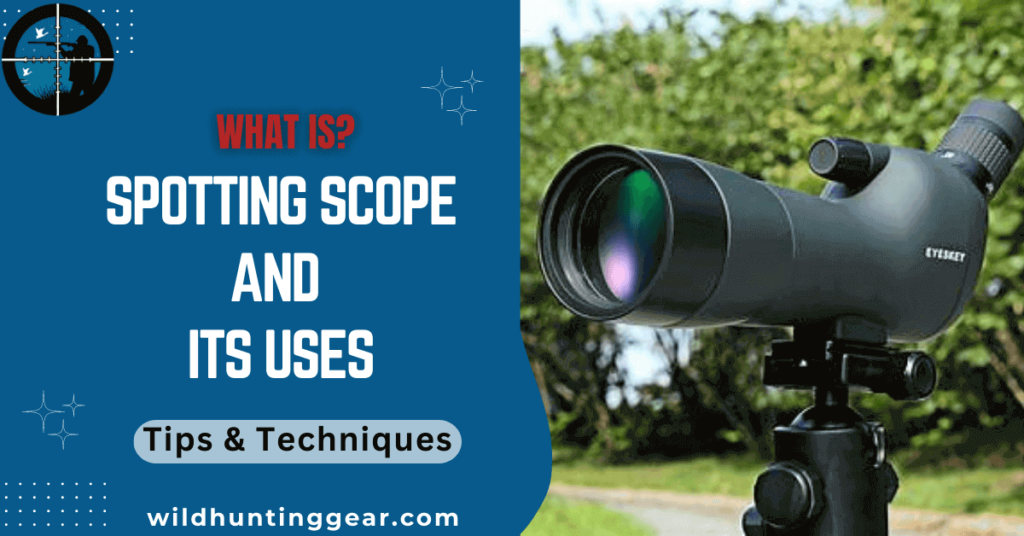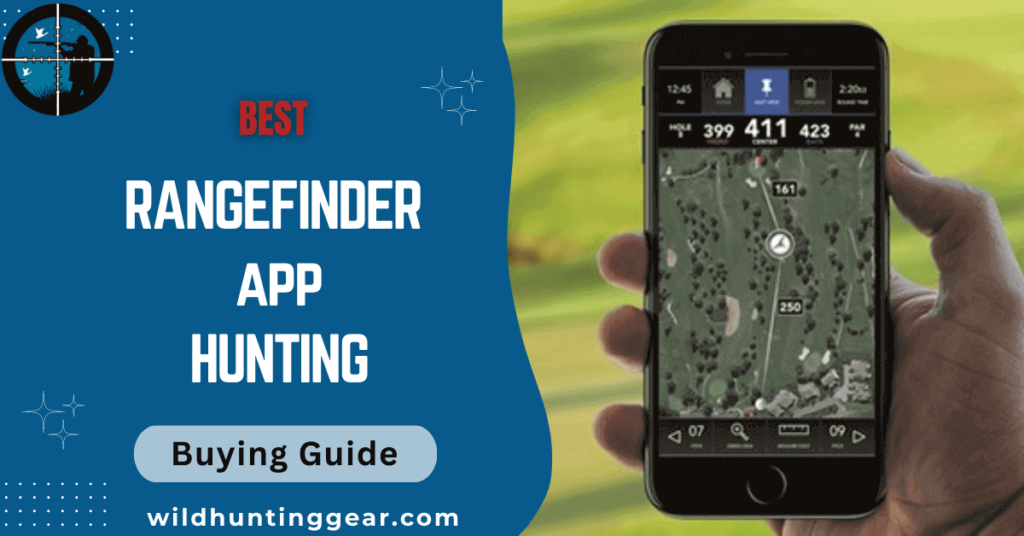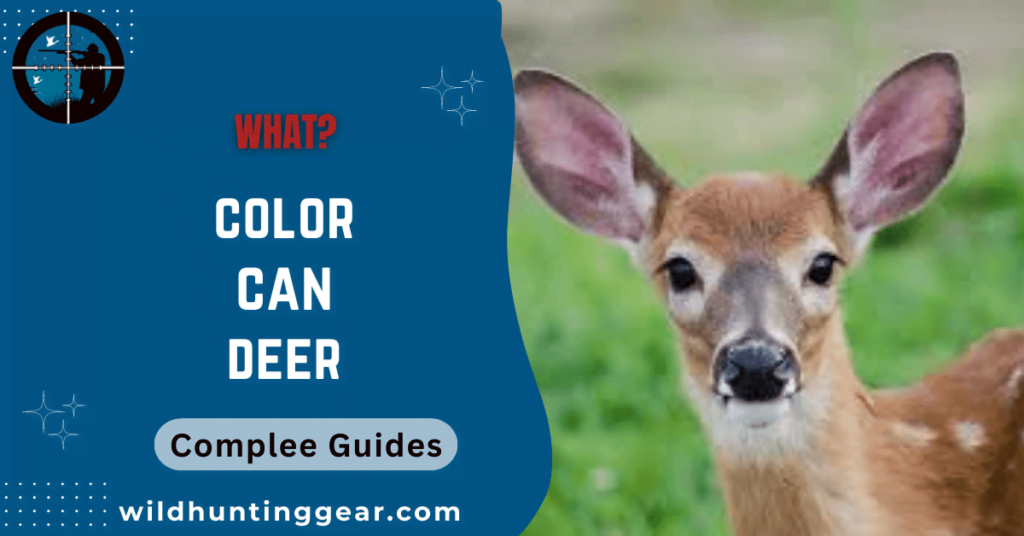Spotting scopes are a powerful and versatile tool for anyone who wants to observe nature, wildlife or even their hunting grounds with greater detail and accuracy.
Whether you’re an experienced hunter looking for the perfect spot to take down your next trophy animal or simply an admirer of wildlife wanting to get closer than ever before a spotting scope is the perfect tool for taking your observing capabilities up a notch.
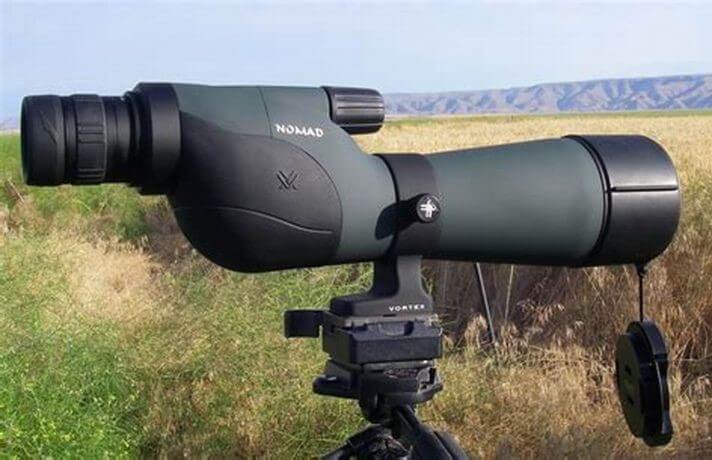
In this blog post, we’ll explore what exactly spotting scopes are, the various types available on the market today and how they can be used in both recreational activities and professional pursuits
What is a spotting scope?
Spotting scopes are a type of telescope specifically designed for looking at far-off objects and providing a detailed view. They have two main components: an optical system consisting of lenses, prisms and other optical elements and a mount which allows the scope to be pointed in a particular direction. Spotting scopes usually feature high-quality optics with long focal lengths and magnification ranges of up to 80x.
Spotting scopes are also known as “terrestrial” telescopes, meaning they are designed for observing objects on Earth, rather than in space. This makes them particularly useful for activities like birdwatching, hunting, target shooting, nature observation and even astronomy allowing you to observe far-away planets and stars more closely.
What are the uses of spotting scope?

- Birdwatching: Spotting scopes allow you to observe birds from farther away and with greater detail, making it easier to identify species.
- Hunting: The magnification capabilities of spotting scopes make them ideal for scouting out potential hunting grounds and spotting game animals from afar.
- Target shooting: Spotting scopes are a great tool for target shooters who need to accurately pinpoint their shots at longer ranges.
- Nature observation: Spotting scopes can be used to observe wildlife, plants and other natural scenes in greater detail than with the naked eye.
- Astronomy: Spotting scopes can be used to observe distant planets and stars in the night sky, allowing you to view more detail than is possible with a standard telescope.
- Photography: Spotting scopes can also be used for taking photos of faraway objects, making them perfect for wildlife photographers and astrophotographers alike.
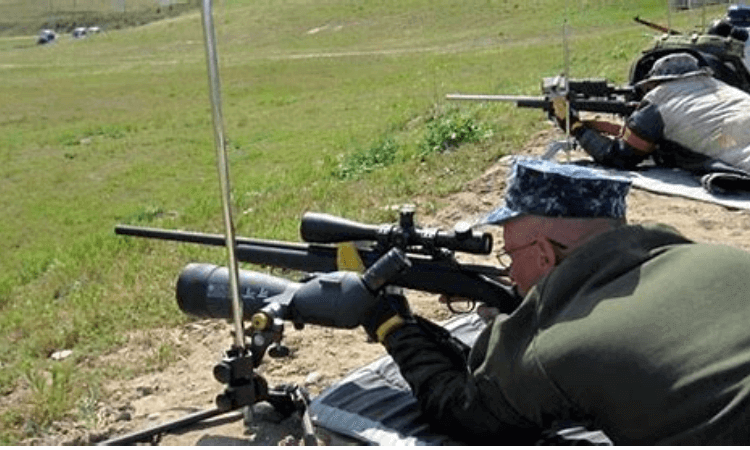
Here are just a few of the most common applications
Different Types of Spotting scope
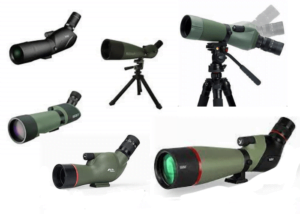
When it comes to spotting scopes, there are several different types available on the market today.
Here’s a quick overview of some of the most popular varieties
- Straight spotting scopes:
These are the most basic type of spotting scope, with an upright straight tube design and a relatively short focal length range (usually up to 60x). They are generally lightweight and easy to use, making them perfect for bird watchers and casual observers.
- Angled spotting scopes:
These scopes feature an angled design that allows the observer to look through the eyepiece while standing in a more comfortable position. This makes them popular among hunters and other users who need to be able to observe their surroundings for extended periods.
- Zoom spotting scopes:
These scopes feature a variable magnification range, with up to 80x zoom power. This makes them ideal for long-distance observers as well as those who need to switch between different levels of magnification quickly and easily.
- Digiscoping spotting scopes:
This type of scope combines a traditional spotting scope with a digital camera, allowing you to take photos and videos of far-away objects. This makes them perfect for wildlife photographers and others who need to capture their observations digitally.
Tips & techniques for using a spotting scope
Here are some tips and techniques to keep in mind
- Choose the appropriate tripod: A tripod or monopod is essential for stabilizing the spotting scope during extended viewing sessions. Make sure to choose one that’s suitable for your scope’s weight and size.
- Use a carrying case: A carrying case is useful for transporting the spotting scope and accessories from one location to the next. It also provides additional protection against dust, dirt, moisture and other elements.
- Adjust the tripod height: Depending on your height and posture, you may need to adjust the tripod or monopod’s height. This will ensure that you can comfortably view the image through the eyepiece without straining your neck or back.
- Use a lens cover: Always use a lens cover to keep the lenses of the spotting scope clean and free from dust, dirt, fingerprints, etc. This will help maintain optimal viewing conditions and extend the life of the scope.
- Set up in advance: When using a spotting scope, it’s best to set up in advance and let your eyes adjust to the darkness before you begin viewing objects through the eyepiece. This will help you avoid any unnecessary strain on your eyes.
- Practice tracking moving objects: Spotting scopes are ideal for tracking fast-moving objects, such as birds or animals. Practising your tracking skills with a stationary object can help you hone your technique and become more proficient at following moving targets.
- Use an illuminated reticle: If you’re using the spotting scope for target shooting or hunting, an illuminated reticle can be beneficial in helping to accurately track and identify targets.
- Take photos or record videos: Using an adapter, you can connect your smartphone or camera to the spotting scope’s eyepiece and take photos or record videos of distant objects. This is a great way to capture memories and share them with friends and family.
- Stay warm: Spotting scopes are best used in colder climates, so it’s important to stay warm during extended viewing sessions. Wear a hat and gloves to keep your head and hands warm while you observe distant objects through the eyepiece.
- Clean the lenses: When you’re finished using the spotting scope, make sure to clean the lenses with a glass cleaner before storing them away. This will help maintain the optical clarity of the lenses and ensure they stay in top condition.
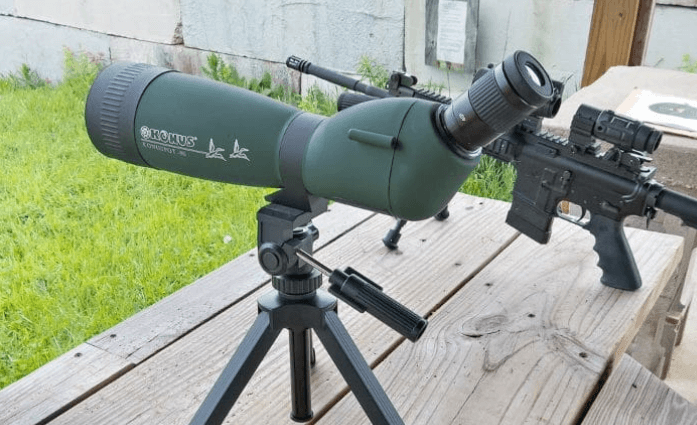
Following these tips and techniques will help you get the most out of your spotting scope experience. With some practice, you’ll soon be able to identify and observe distant objects with ease!
Advantages of using a spotting scope
Using a spotting scope can be an invaluable tool for anyone looking to get closer to nature, wildlife or even their next hunting target.
Here are some of the advantages of using a spotting scope
- Enhanced magnification: Spotting scopes offer higher magnification capabilities compared to most binoculars, allowing you to see distant objects in greater detail. This is particularly useful for birdwatching, wildlife observation and target shooting.
- Longer range: With their powerful lenses and higher magnification, spotting scopes enable you to view objects at much longer distances, making them ideal for observing objects that are beyond the range of regular binoculars.
- Image quality: Spotting scopes are designed with high-quality optics that provide sharp, clear and colour-accurate images. This level of image clarity allows you to discern fine details even at a distance.
- Versatility: Spotting scopes are versatile tools that can be used for various activities, including birdwatching, hunting, stargazing, surveillance and sports events. They are preferred by nature enthusiasts, hunters and amateur astronomers.
- Tripod mountable: Spotting scopes can be easily mounted on a stable tripod, providing a steady platform for extended viewing sessions. This reduces hand fatigue and ensures a shake-free experience, especially when using high magnification.
- Weather resistance: Many spotting scopes come with weatherproofing features, such as waterproof and fog-proof coatings, making them suitable for outdoor use in various weather conditions.
- Compact and portable: While spotting scopes offer powerful magnification, they are generally more compact and lightweight than telescopes, making them easy to carry around during outdoor activities.
- Digiscoping capability: Some spotting scopes can be paired with compatible cameras or smartphones using adapters, allowing you to capture long-distance photos and videos, enhancing your nature photography experience.
- Target shooting and hunting: Spotting scopes are widely used in target shooting and hunting, helping shooters spot their shots at long distances and analyze groupings more effectively.
- Observing astronomical objects: Spotting scopes with astronomical eyepieces can be used for basic stargazing and observing bright celestial objects like the moon and planets.
- Ideal for wildlife observation: Spotting scopes are a favourite among wildlife enthusiasts, enabling them to observe and identify animals in their natural habitats without getting too close and disturbing them.
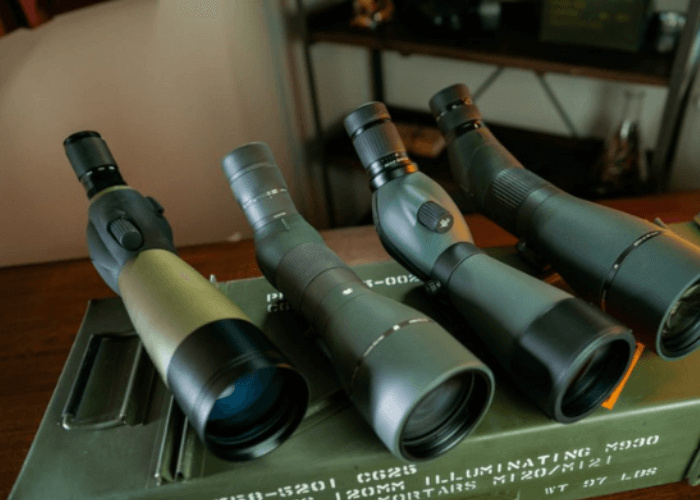
Disadvantages of using a spotting scope
Certainly! Spotting scopes are optical devices commonly used for observing distant objects, nature and wildlife. However, like any tool, they come with some disadvantages.
Here are the main disadvantages of using a spotting scope
- Cost: Spotting scopes can be quite expensive, especially if you want higher quality and better performance. Compared to binoculars, they may put a strain on your budget.
- Weight and size: Spotting scopes tend to be larger and heavier than binoculars. Carrying them around for extended periods during outdoor activities can be cumbersome, especially if you need to hike long distances.
- Limited field of view: Spotting scopes generally offer a narrower field of view compared to binoculars. This can make it challenging to track fast-moving subjects or scan large areas efficiently.
- Higher minimum magnification: While spotting scopes offer powerful magnification, they often have a higher minimum magnification setting compared to binoculars. This can make it challenging to observe nearby objects or birds at close range.
- Requires stability: To achieve clear and steady images at high magnifications, spotting scopes typically require a stable base or tripod. Handholding them at maximum magnification can result in shaky views and reduce image quality.
- Less versatile: Binoculars are more versatile in various situations. Spotting scopes are primarily designed for long-distance observation and may not be as practical for general use.
- Weather conditions: Adverse weather conditions, such as fog, rain or heat haze, can significantly impact the performance of spotting scopes. These environmental factors can limit visibility and make the scope less effective.
- Learning curve: Using a spotting scope effectively requires some practice and skill. Focusing, adjusting magnification and tracking fast-moving subjects may take time to master.
- Eye relief: Some spotting scopes have limited eye relief which means you must place your eye very close to the eyepiece. This can be uncomfortable for people who wear glasses or for extended viewing sessions.
- Image inversion: Some spotting scopes produce inverted images which can be disorienting and challenging to get used to, especially for beginners.
Final thoughts
All in all, spotting scopes provide a great way to gain clarity and detail from far distances. Whether it’s for bird watching by nature lovers or hunting games by hunters, using a spotting scope can make the experience easier and more enjoyable.
With its high power magnification, it’s possible to observe and analyze different objects you may find in the distance.
With so many options and different sizes available, there is an ideal size for everyone. As with any tool or activity, being comfortable with your device is the key to making the most out of whatever you are doing.
Spotting scope can certainly be beneficial if used responsibly and well-informed. It is up to you how far you want to go when exploring its capabilities and features.
